Lunar Mass Drivers: Moon Catapults for the Space Economy
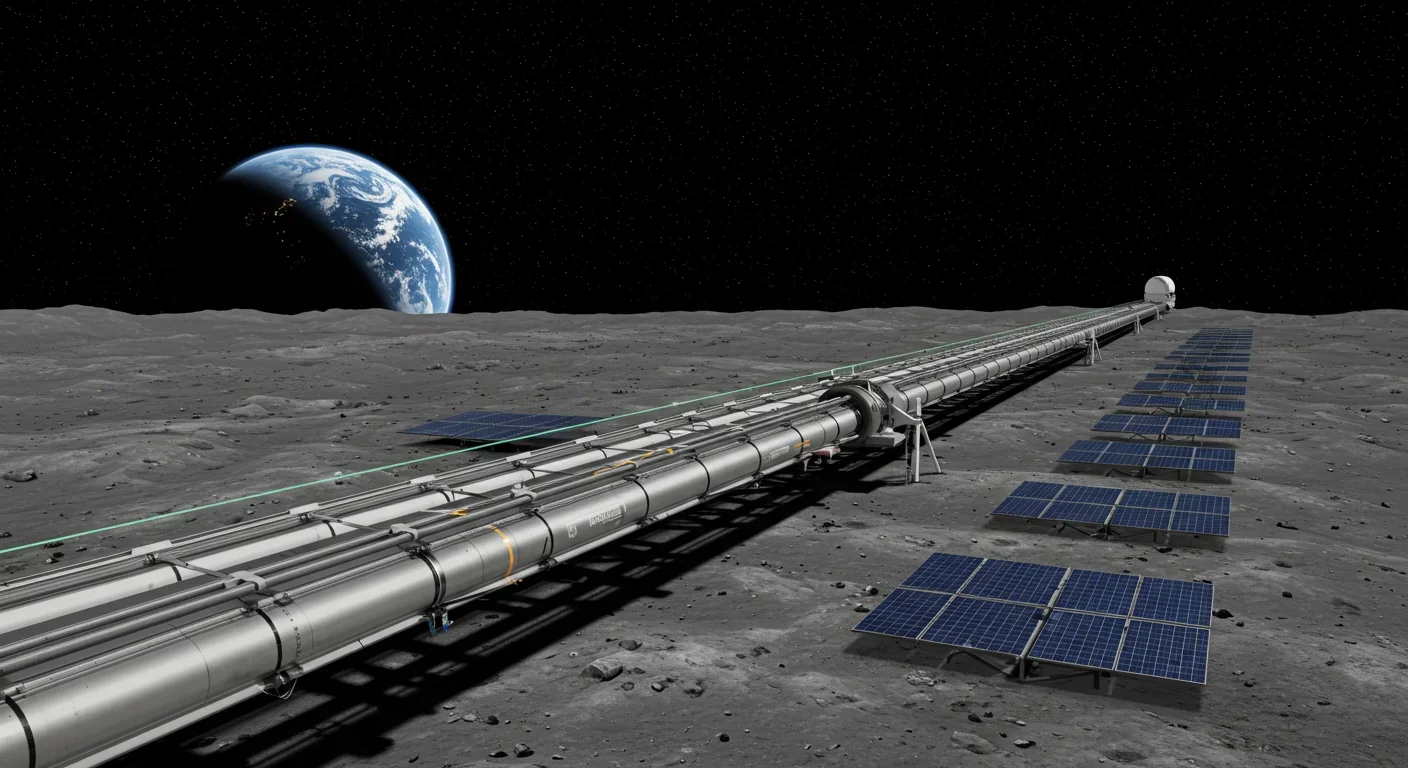
TL;DR: Haumea, a football-shaped dwarf planet spinning every 3.9 hours in the Kuiper Belt, became the first trans-Neptunian object discovered with rings in 2017. The narrow ring system reveals how collisions, rapid rotation, and resonant dynamics create Saturn-like features in the frozen outer solar system.
On January 21, 2017, twelve telescopes scattered across ten European observatories pointed at a single spot in the sky. Astronomers weren't looking at Haumea directly—they were watching a distant star blink. When the football-shaped dwarf planet passed in front of that star, the light dimmed twice: once for Haumea itself, and twice more for something unexpected. Those extra dips revealed a secret hiding 43 astronomical units from the Sun: Haumea had rings.
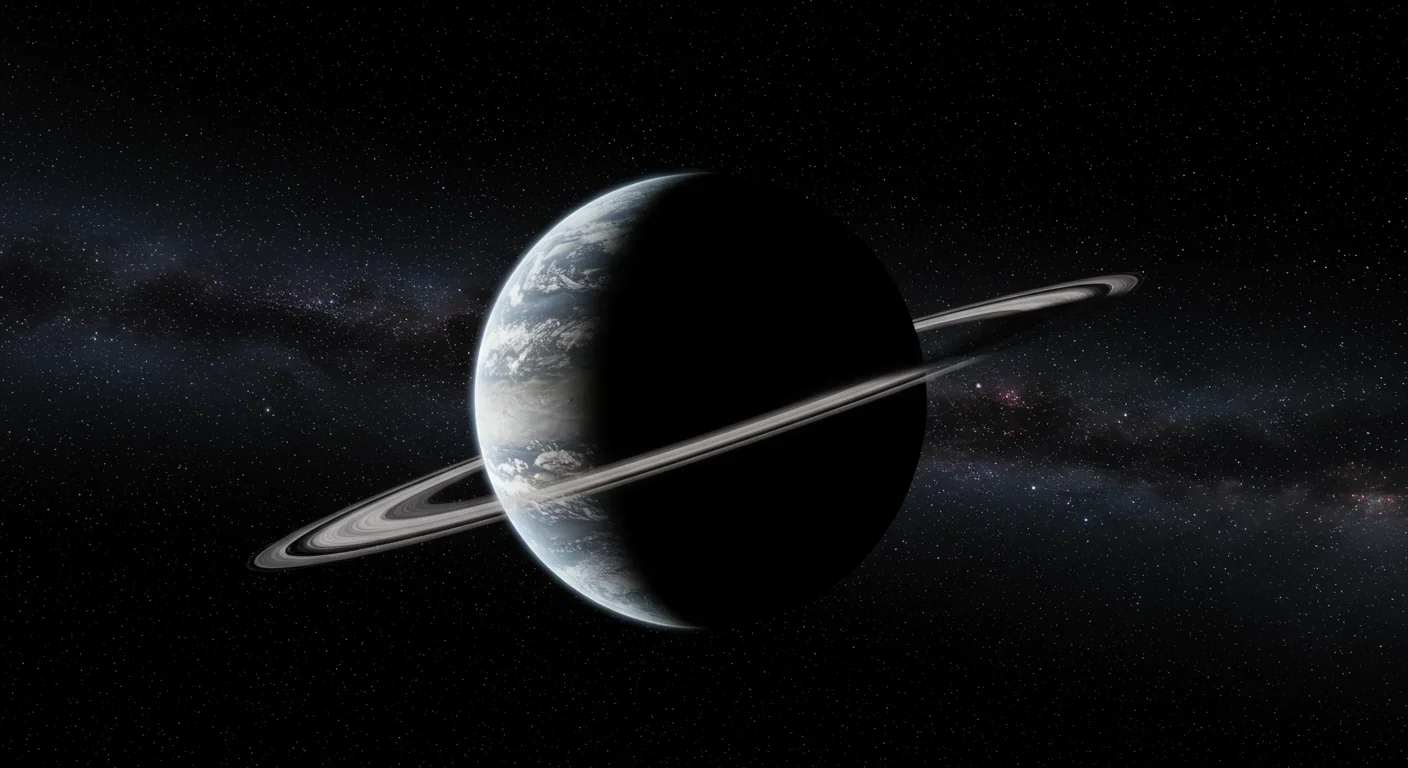
This made Haumea the first known trans-Neptunian object with a ring system, fundamentally changing our understanding of where rings can exist in the solar system.
Haumea doesn't play by normal rules. Most dwarf planets are round or slightly squashed. Haumea looks like someone stretched it on a taffy machine. With dimensions of roughly 2,000 × 1,500 × 1,000 kilometers, it's more ellipsoid than sphere—and the culprit is speed.
Haumea spins faster than any large object in our solar system, completing a full rotation every 3.9 hours. That's faster than Jupiter, faster than Saturn, faster than anything over a hundred kilometers in diameter. This breakneck spin flings material outward, distorting Haumea into its distinctive rugby-ball shape.
Haumea completes a full rotation in just 3.9 hours, making it the fastest-spinning large object in our solar system—a cosmic speed record that shapes everything about this distant world.
The rapid rotation isn't just cosmetic. It creates a dynamic gravitational environment that makes Haumea uniquely capable of hosting a stable ring system in the frozen outer reaches of the solar system.
What makes Haumea's spin so extreme? The leading theory involves a massive collision billions of years ago. Something big hit Haumea hard enough to send it spinning like a top and spray debris into space—debris that likely formed its two known moons, Hi'iaka and Namaka, and possibly its ring.
You can't just point a telescope at Haumea and see its ring. Even the Hubble Space Telescope lacks the resolution to spot a 70-kilometer-wide ring over 40 astronomical units away. Instead, astronomers used a technique called stellar occultation—essentially creating a cosmic shadow puppet show.
The method requires exquisite timing. Using predictions from the Gaia spacecraft's milliarcsecond-precision star maps, researchers calculated exactly when and where Haumea would pass in front of a background star. On that January night in 2017, a coordinated network of telescopes captured the event with high-speed cameras.
The resulting light curves told the story. As Haumea crossed in front of the star, the light dimmed—but not all at once. First came a brief dip, then the main event as Haumea itself blocked the star, then another dip. Those symmetric dimmings before and after the main occultation were the signature of a ring.
Stellar occultations provide kilometer-level accuracy on an object's shape and can detect features like rings regardless of the object's distance from Earth. This technique has revolutionized our understanding of distant solar system bodies, enabling discoveries that would be impossible with direct imaging alone.
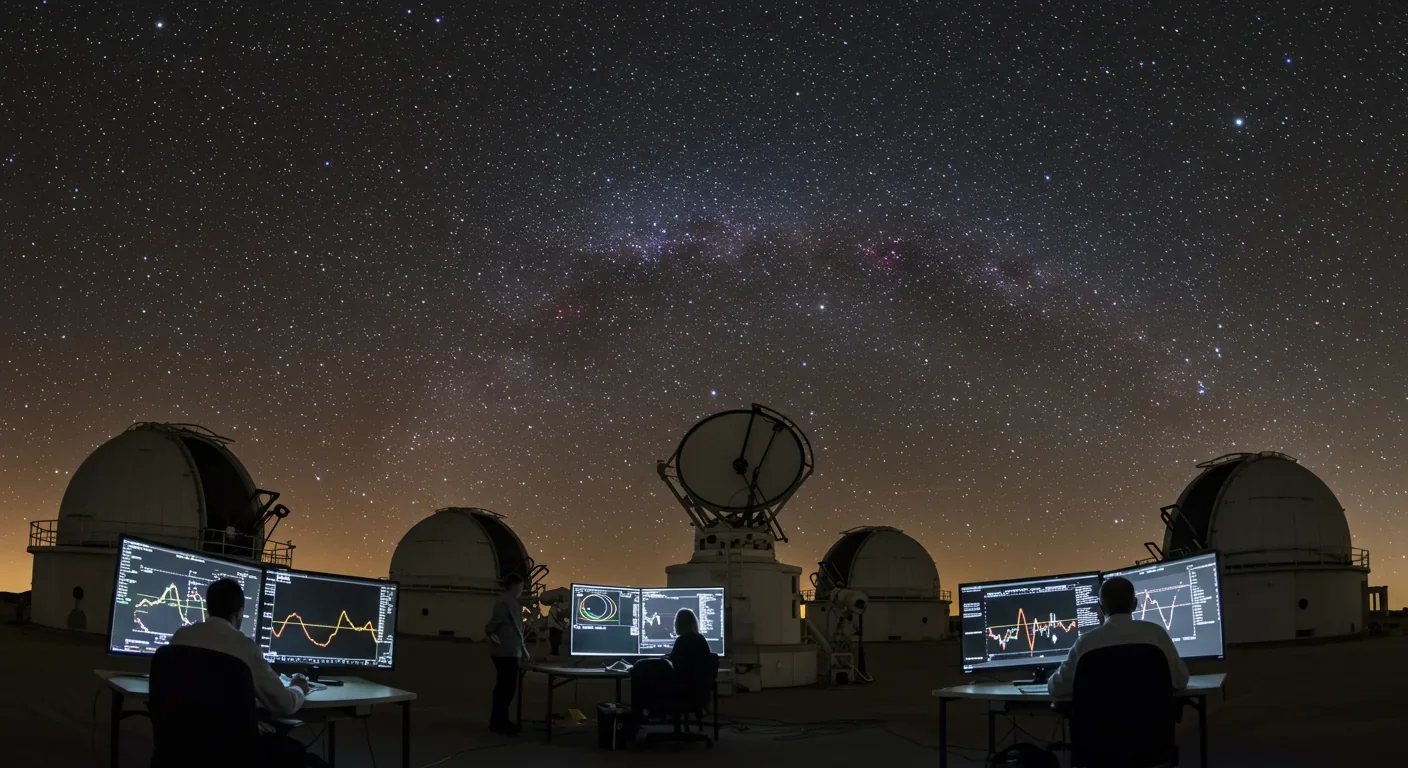
"We predicted that Haumea would pass in front of a star on the 21st of January 2017, and twelve telescopes from ten different European observatories converged on the phenomenon."
— José Luis Ortiz, Institute of Astrophysics of Andalusia
The 2017 observation revealed a ring with a radius of approximately 2,287 kilometers from Haumea's center, a width of roughly 70 kilometers, and an opacity of 0.5—meaning it's somewhat translucent, letting half the starlight through.
Haumea's ring shares some characteristics with Saturn's famous rings but operates in a completely different environment. Saturn's rings are massive, complex structures made of countless icy particles ranging from dust grains to house-sized boulders. Haumea's ring is far more modest—a narrow band of material probably consisting of particles smaller than one millimeter.
The composition appears similar, though. Both ring systems are likely dominated by water ice, which makes sense given Haumea's surface is covered with crystalline water ice. This frozen material reflects sunlight well, giving Haumea a relatively high albedo despite being billions of miles from the Sun.
What sets Haumea's ring apart is its location and stability mechanism. The ring sits in a 3:1 spin-orbit resonance with Haumea's rotation. This means that for every three times Haumea spins on its axis, particles in the ring complete one orbit around the dwarf planet. This resonance acts like a cosmic sweet spot, helping to confine and stabilize the ring material over long timescales.
The ring lies well within Haumea's Roche limit—the distance where tidal forces would tear apart a moon. If Haumea were spherical, its Roche limit would extend to about 4,400 kilometers. The ring at 2,287 kilometers sits comfortably inside this zone, where any material trying to clump together into a moon would be ripped apart by tidal forces.
Interestingly, the ring plane coincides almost perfectly with Haumea's equator and the orbital plane of its outer moon Hi'iaka. This alignment hints at a shared origin story—perhaps all three features emerged from the same catastrophic event.
How did Haumea get its ring? Two main theories compete, both tied to Haumea's distinctive characteristics.
The collision hypothesis suggests another Kuiper Belt object smashed into Haumea with tremendous force. This impact would have done three things: accelerated Haumea's rotation to its current breakneck pace, ejected large chunks that became the moons Hi'iaka and Namaka, and scattered smaller debris that settled into the ring. The crystalline ice on Haumea's surface and moons supports this idea—crystalline ice is unstable over billion-year timescales unless recently formed or refreshed.
The rotational shedding hypothesis offers an alternative. Haumea spins so fast that material at its equator experiences reduced effective gravity. If Haumea ever spun even slightly faster—perhaps due to an impact or internal redistribution of mass—material could have been flung off the surface and into orbit. Over time, this material would spread into a ring.
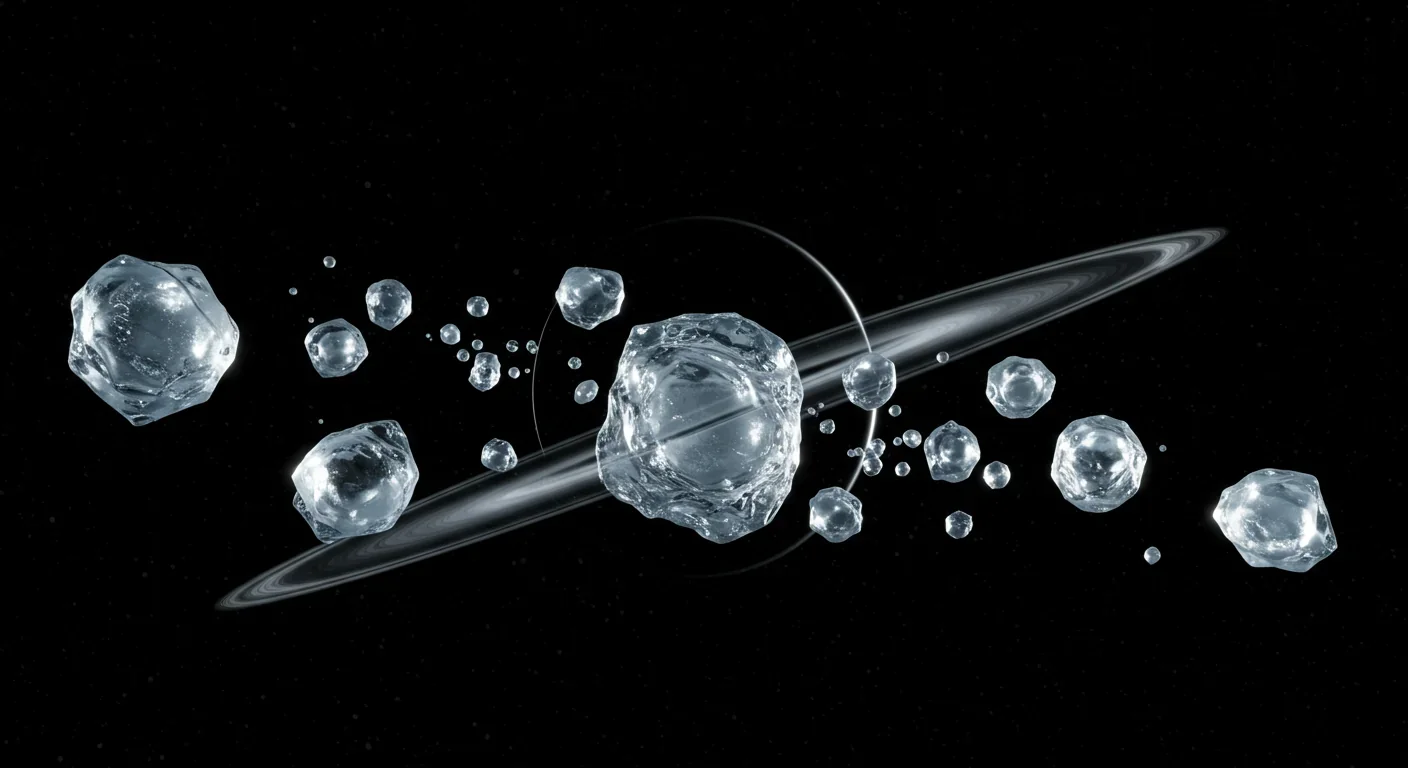
These theories aren't mutually exclusive. A major collision could have set Haumea spinning fast enough for continued rotational shedding. The 3.2-degree inclination of the ring relative to Haumea's equator suggests some complexity in how the ring formed and evolved.
Recent radiative transfer modeling shows the ring particles are strong forward scatterers, meaning they preferentially scatter light in the direction it's already traveling. This behavior is consistent with very small, icy particles—likely fragments from either collision debris or material eroded from Haumea's surface.
The ring's 3:1 resonance with Haumea's rotation creates a gravitational sweet spot that has kept the ring stable for potentially millions or billions of years.
Whatever the exact mechanism, the ring appears stable for now. The 3:1 resonance with Haumea's rotation provides a stabilizing influence, while the rapid rotation creates a flattened gravitational potential that helps maintain the ring's equatorial configuration.
Before 2013, we thought rings belonged exclusively to giant planets. Then came Chariklo, a centaur object between Jupiter and Neptune, revealed to have two dense rings. Haumea's discovery in 2017 followed by Quaoar's ring in 2023 forced a paradigm shift. Small icy bodies can have rings too—but they're still uncommon.
The outer solar system poses challenges for ring formation and maintenance. Temperatures are frigid, meaning any collisions happen at lower velocities than in the warmer inner system. Lower impact velocities make it less likely for collisions to generate the fine debris needed for rings.
Micrometeorite bombardment and solar radiation also gradually erode ring particles. In the inner solar system, this erosion is rapid, requiring constant replenishment. But at 43 AU, processes operate more slowly. Once formed, a ring like Haumea's could potentially last hundreds of millions of years or longer.
The scarcity of rings among trans-Neptunian objects probably comes down to special requirements. You need the right combination of factors: a significant impact to generate material, rapid rotation to help stabilize the ring, and possibly resonant dynamics to confine particles. Most Kuiper Belt objects lack this perfect storm of conditions.
Yet the fact that we've now found rings around multiple small bodies—Chariklo, Haumea, and Quaoar—suggests they may be more common than we initially thought. We might simply have missed them because they're difficult to detect without stellar occultations.
The discovery of Haumea's ring showcases how far observational astronomy has come. For decades, studying trans-Neptunian objects meant squinting at fuzzy dots in telescope images and making educated guesses about their properties. Stellar occultations changed everything.
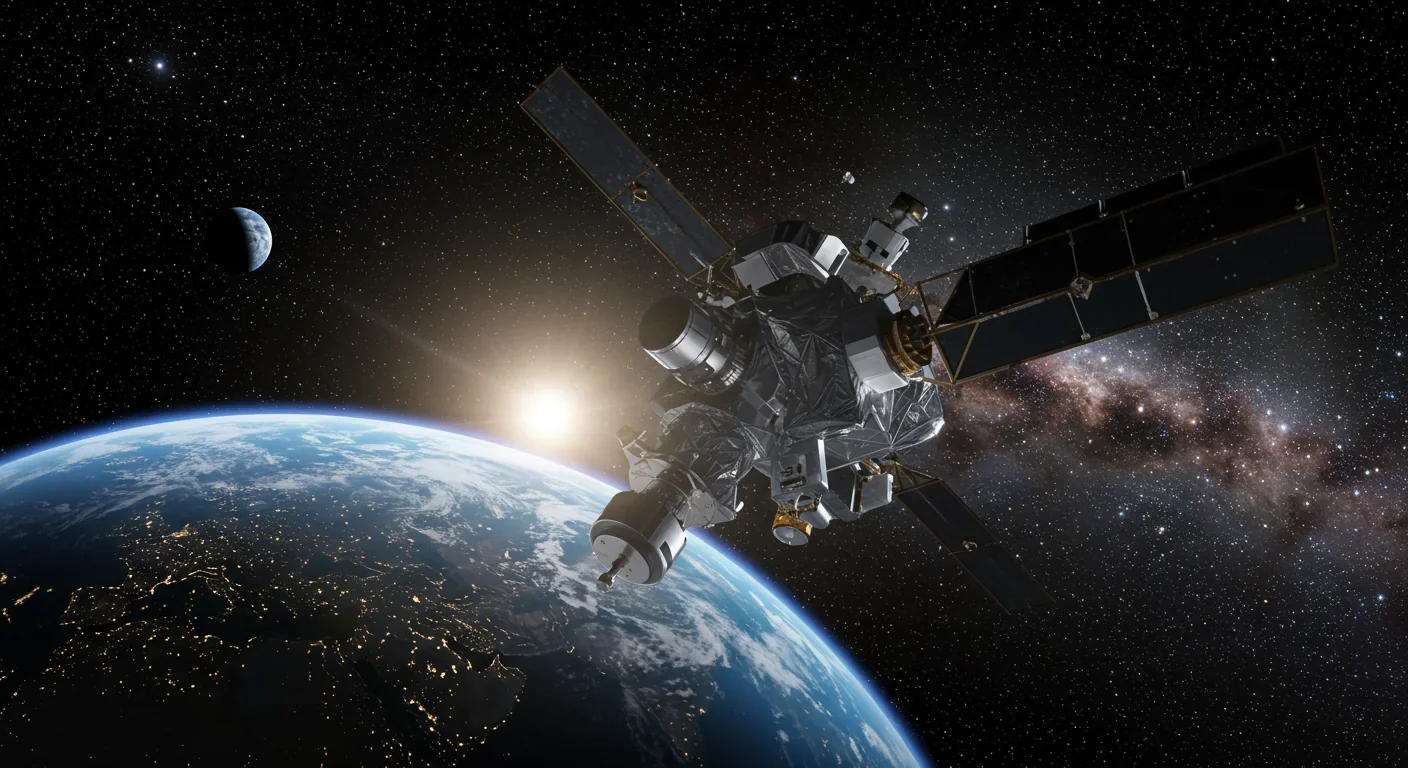
The technique works because of geometry and physics. A ring only 70 kilometers wide, seen from Earth, subtends an angle of about 30 milliarcseconds—far too small for even the best ground-based telescopes to resolve directly. But a star is essentially a point source of light. When the ring passes in front of that point source, it creates a measurable dip in brightness.
Gaia's contribution cannot be overstated. By measuring star positions to milliarcsecond precision, Gaia enabled accurate prediction of exactly when and where occultations would occur. This transformed occultation astronomy from a lucky event into a planned observation campaign.
Future observations might provide even better data. The James Webb Space Telescope has sufficient angular resolution to potentially image Haumea's ring directly in infrared wavelengths. The Atacama Large Millimeter Array (ALMA) might detect the ring at submillimeter wavelengths, revealing new details about particle size and composition.
Multi-wavelength observations would allow researchers to build spectral energy distributions of the ring, constraining particle sizes and compositions more precisely. Current models favor amorphous water-ice grains smaller than a millimeter, but direct imaging could confirm or refute these predictions.
Haumea's ring matters for more than just one dwarf planet. It tells us something fundamental about the Kuiper Belt: this region is dynamically active and collisions have shaped it significantly.
The Kuiper Belt isn't a quiet, frozen museum. It's a place where objects still occasionally smash together, fragments still orbit, and angular momentum gets redistributed in dramatic ways. Collisions in the Kuiper Belt can create entire families of related objects—like Haumea's family, which includes not just its moons and ring but also several smaller bodies sharing similar orbits and compositions.
"There are different possible explanations for the formation of the ring; it may have originated in a collision with another object, or in the dispersal of surface material due to the planet's high rotational speed."
— José Luis Ortiz, Institute of Astrophysics of Andalusia
These collisional families provide clues about impact physics in the outer solar system. The fact that a collision could create rings, moons, and numerous smaller fragments tells us about the energy involved and how material behaves at cryogenic temperatures.
Haumea's ring also informs our understanding of how satellites form. The alignment between the ring and Hi'iaka's orbit suggests they're part of the same system. Perhaps Hi'iaka formed from ring material that clumped together outside the Roche limit, while material inside the Roche limit remained as a ring. If true, we might be witnessing moon formation in slow motion.
The 3:1 resonance is particularly intriguing. Resonances play crucial roles throughout the solar system, from Neptune's control over Pluto's orbit to the gaps in Saturn's rings. Finding a resonant ring around a dwarf planet suggests that resonant dynamics might be a general mechanism for maintaining narrow rings, regardless of the parent body's size.
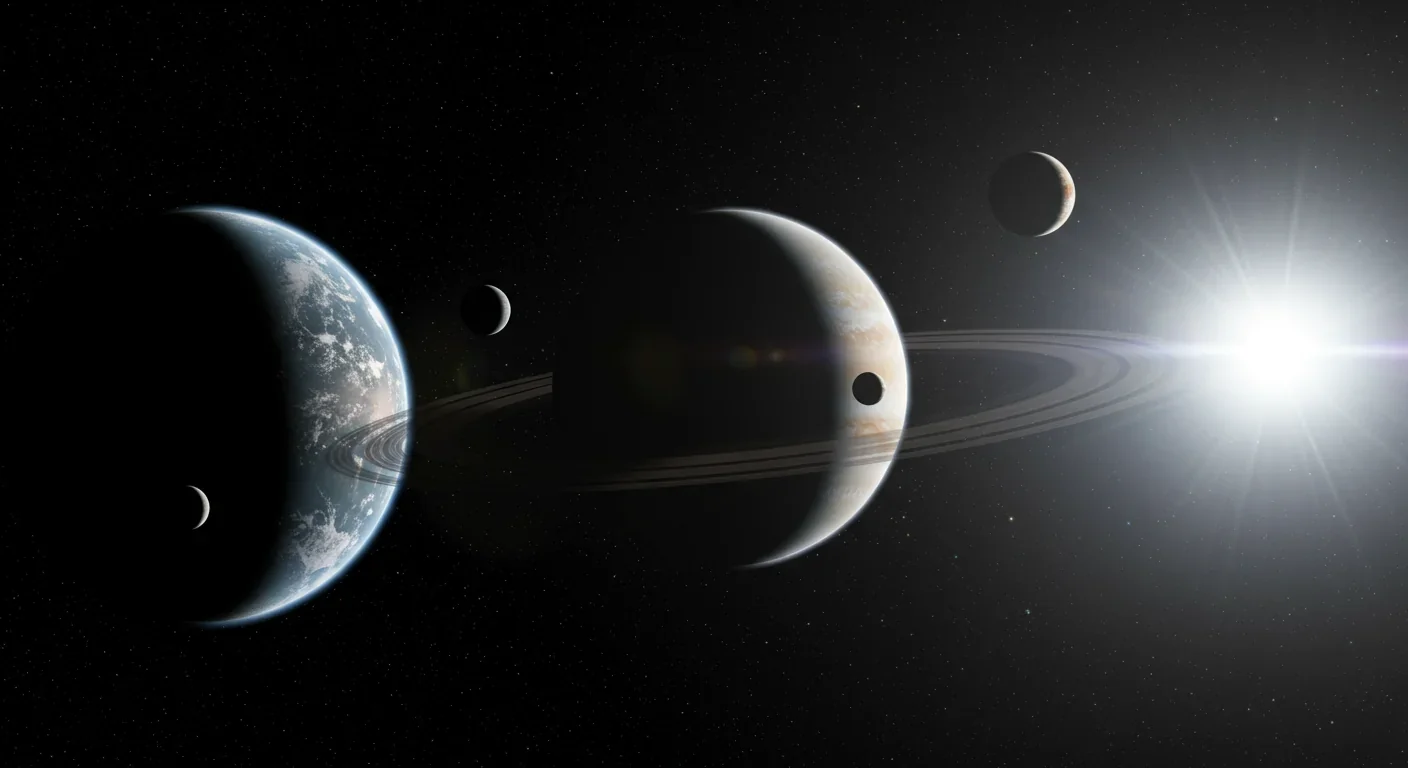
This has implications beyond our solar system. As we discover more exoplanets and try to understand their properties, knowing that small icy bodies can host stable ring systems expands the range of possible planetary system architectures. Rings might be more ubiquitous throughout the galaxy than we previously imagined.
Haumea now sits in an exclusive but growing club. Saturn, Jupiter, Uranus, and Neptune have had known ring systems for decades or centuries. The discovery of rings around Chariklo in 2013 opened the category to smaller bodies. Haumea joined in 2017, and Quaoar followed in 2023.
What do these ring-bearing bodies have in common? Surprisingly little, which makes the phenomenon even more interesting. The gas giants have massive gravitational fields and complex moon systems. Chariklo is a centaur in an unstable orbit between the giant planets. Haumea and Quaoar are trans-Neptunian objects in the frozen outer reaches.
The main commonality seems to be the presence of mechanisms to confine ring material. For the gas giants, that means shepherd moons and resonances. For Chariklo, Haumea, and Quaoar, it might involve spin-orbit resonances or other dynamical effects related to their irregular shapes and rotations.
Haumea's extreme rotation sets it apart even within the ringed-body family. No other known ringed object spins as fast. This suggests rapid rotation might be particularly favorable for ring stability around small bodies, where gravitational forces are weaker and rings might otherwise disperse quickly.
The narrow width of Haumea's ring—just 70 kilometers—resembles some of Saturn's narrow ringlets more than Saturn's broad ring system. Narrow rings typically require some confinement mechanism; otherwise, particles naturally spread out over time due to collisions and gravitational perturbations. The 3:1 resonance might serve this confinement role for Haumea.
Despite the 2017 discovery and subsequent analysis, many questions about Haumea's ring remain unanswered.
We don't know the ring's exact age. Did it form billions of years ago in the same collision that created Haumea's moons, or is it much younger? If the ring has persisted for billions of years, what prevents it from dispersing? If it's young, what recent event created it?
The particle size distribution remains uncertain. Models suggest particles smaller than one millimeter dominate, but direct observations haven't confirmed this. Larger particles might exist but be too sparse to detect with current methods.
We still don't know if Haumea's ring formed billions of years ago or if it's a much younger feature created by a recent collision—the ring's age remains one of its deepest mysteries.
The ring's vertical thickness is unknown. Is it a flat sheet or a more three-dimensional structure? The occultation observations only constrain radial width, not vertical extent.
We also don't understand the long-term stability in detail. While the 3:1 resonance likely helps, computer simulations of Haumea's ring dynamics remain challenging because of the dwarf planet's extreme ellipsoidal shape. Haumea's gravitational field is much more complex than a sphere's, creating a time-varying potential as the planet rotates. How ring particles navigate this environment over millions of years isn't fully worked out.
The relationship between the ring and the moons needs clarification. Are they truly products of the same event, or did they form separately? Could material exchange between the moons and ring, with micrometeorite impacts on the moons replenishing ring particles?
Perhaps most intriguingly, we don't know if other trans-Neptunian objects have undiscovered rings. The detection of rings around Chariklo, Haumea, and Quaoar happened within a decade, suggesting selection bias—we're finding rings primarily around objects that happen to pass in front of bright stars. Many Kuiper Belt objects remain unobserved by stellar occultations.
Stellar occultation campaigns are ramping up. With Gaia providing precise star positions and affordable high-speed cameras becoming widespread, amateur and professional astronomers worldwide can participate in coordinated observations. This democratization of occultation science increases the chances of catching rare events.
The next generation of telescopes might provide alternative detection methods. The James Webb Space Telescope's infrared capabilities could potentially image Haumea's ring directly if the geometry is favorable. ALMA observations at submillimeter wavelengths might detect thermal emission from ring particles.
These direct observations would revolutionize our understanding. Instead of inferring ring properties from brief dimming events, we could study them continuously, watching how they change with Haumea's seasons (which last decades given the 285-year orbital period) and with viewing geometry.
Spacecraft missions to the outer solar system remain rare and expensive, but a dedicated mission to Haumea would answer many lingering questions. Close-up images would reveal the ring's structure in exquisite detail, spectroscopy would nail down the composition, and observations over time would clarify the ring's dynamics.
Such a mission faces daunting challenges—the flight time to Haumea would be decades with current propulsion technology, and the faint sunlight at 43 AU makes solar panels impractical, requiring nuclear power sources. But the scientific return would be enormous, providing our first detailed look at a ring system around a dwarf planet.
Haumea's ring challenges assumptions. We thought rings required giant planets. We were wrong. We thought the outer solar system was a frozen, inactive place. We were wrong. We thought we understood where rings could exist and how they formed. We're still learning.
Every paradigm shift in astronomy comes from observations that don't fit our models. When Galileo first saw Saturn's "ears" through his telescope in 1610, he couldn't explain them—the resolution was too poor to recognize them as rings. It took decades for Christiaan Huygens to propose the ring hypothesis in 1655, and longer still for James Clerk Maxwell to explain their dynamics in 1859.
Haumea's ring represents a similar moment. We detected something unexpected, and now we're working out the implications. That process drives science forward, forcing us to refine our theories and expand our understanding of what's possible.
The discovery also demonstrates the power of international collaboration. Twelve telescopes from ten observatories worked together on that January night in 2017, pooling resources and expertise to capture an event visible for just minutes. This kind of coordination is increasingly common in astronomy, where phenomena don't respect national borders and the best science comes from combining diverse perspectives and capabilities.
For students and educators, Haumea provides a compelling case study in planetary science. It touches on orbital mechanics, tidal forces, collision physics, observational techniques, and resonant dynamics—all in one peculiar dwarf planet. It's a reminder that our solar system still holds surprises and that even small worlds in distant orbits can teach us profound lessons.
Haumea will probably never match Saturn's visual splendor. You won't find stunning photographs of Haumea's ring gracing magazine covers or desktop wallpapers. It's too far away, too faint, too difficult to observe.
But in some ways, Haumea's ring is more remarkable than Saturn's. It exists where it shouldn't—around a body too small, too far from the Sun, spinning almost impossibly fast. It was detected through cosmic geometry rather than direct imaging, a triumph of prediction and coordination. And it opened our eyes to possibilities we hadn't considered.
The dwarf planet with rings represents the frontier of solar system science. Out in the frozen darkness beyond Neptune, worlds we barely understand orbit in ways we're still mapping. They collide, fragment, spin, and evolve. Sometimes they form rings.
Haumea reminds us that the solar system is not fully explored or understood. Every new observation brings potential surprises. The cosmos doesn't care about our assumptions or our expectations. It simply exists, with all its complexity and diversity, waiting for us to look closer.
That January night in 2017, when starlight dimmed and brightened in a pattern that revealed a ring, wasn't just a successful observation. It was a door opening—a glimpse of ring systems throughout the solar system and beyond, on worlds large and small, near and far. Haumea showed us that rings aren't exclusive to the gas giants. They're part of the broader language of gravity, angular momentum, and collisions that shapes worlds everywhere.
The Saturn of the Kuiper Belt spins on, trailing its narrow ring through the darkness. And we watch, measure, and learn.

Lunar mass drivers—electromagnetic catapults that launch cargo from the Moon without fuel—could slash space transportation costs from thousands to under $100 per kilogram. This technology would enable affordable space construction, fuel depots, and deep space missions using lunar materials, potentially operational by the 2040s.

Ancient microorganisms called archaea inhabit your gut and perform unique metabolic functions that bacteria cannot, including methane production that enhances nutrient extraction. These primordial partners may influence longevity and offer new therapeutic targets.

CAES stores excess renewable energy by compressing air in underground caverns, then releases it through turbines during peak demand. New advanced adiabatic systems achieve 70%+ efficiency, making this decades-old technology suddenly competitive for long-duration grid storage.

Human children evolved to be raised by multiple caregivers—grandparents, siblings, and community members—not just two parents. Research shows alloparenting reduces parental burnout, improves child development, and is the biological norm across cultures.

Soft corals have weaponized their symbiotic algae to produce potent chemical defenses, creating compounds with revolutionary pharmaceutical potential while reshaping our understanding of marine ecosystems facing climate change.

Generation Z is the first cohort to come of age amid a polycrisis - interconnected global failures spanning climate, economy, democracy, and health. This cascading reality is fundamentally reshaping how young people think, plan their lives, and organize for change.

Zero-trust security eliminates implicit network trust by requiring continuous verification of every access request. Organizations are rapidly adopting this architecture to address cloud computing, remote work, and sophisticated threats that rendered perimeter defenses obsolete.